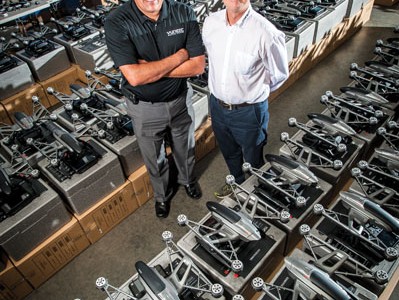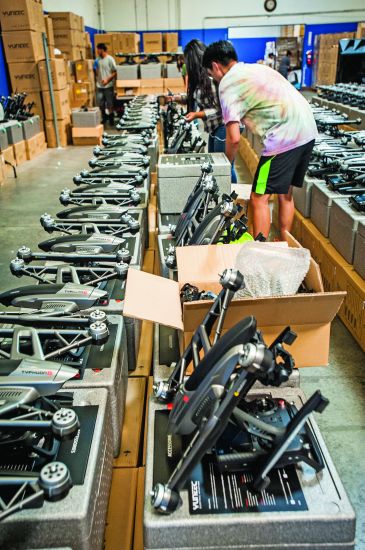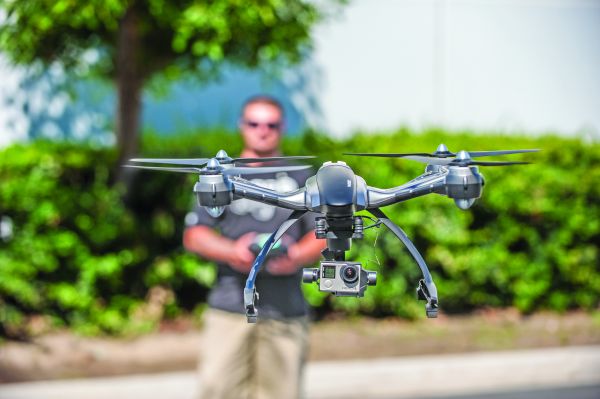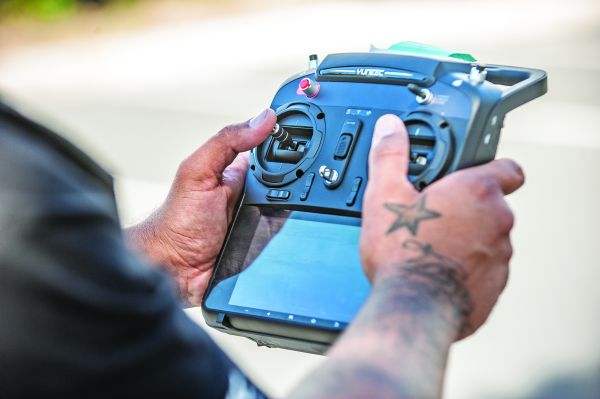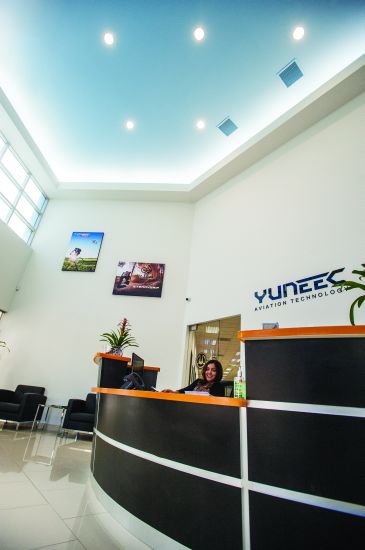We talk with this rising star of the multirotor world
Since last year’s introduction of Yuneec’s first ready-to-fly camera drone, the Typhoon Q500, this company has been rapidly expanding to keep up with the demand for its high-quality ready-to-fly multirotors. We had a chance to visit Yuneec’s Southern California warehouse and sit down to talk with its CEO, Shan Phillips. But first, let’s cover a little history of this remarkable company.
In the beginning
Founded in 1999, Yuneec quickly became the world leader in manufacturing RC model aircraft for other brands and was one of the first to make a ready-to-fly, radio-control, electric-powered airplane. In 2006, Yuneec moved into electric full-scale aviation. Its two-seat airplane, the E430, features a 48,000-watt electric propulsion system and carbon-fiber composite airframe. This forward-thinking aircraft design and propulsion system was awarded the Lindbergh Electric Aircraft Prize, and the company’s E-Spyder, a single-seat plane, was one of the world’s first electric aircraft to be certified.
Fast-forward to 2015, and Yuneec has become a worldwide company with offices in North America, Europe, and Asia, and it manufactures more than one million units a year that are sold under other name brands as well as their own Typhoon and Tornado drones.
RotorDrone: What additional fail-safe features do you plan to add to your drones?
Shan Phillips: Of course, the direction we want to go in is to make the quads as safe as possible, but the direction everyone is going in is “sense and avoid.” But the big issue with that is there is no good technology available that can deal with every [obstacle] unless you spend a lot of money and start adding a lot of sensors, which would increase cost and payload and decrease flight time. But I think, over time, all of our drones will have a self-driving mode.
For example, right now we have waypoints, and most of the time they are referred to in a two-dimensional sense. But now people are talking about columns, such as a green tunnel or pipes in the sky, where the drones can fly and have a safe route to follow to get from point A to B. All of these routes can easily be programmed into a drone.
RD: With the big $60 million investment by Intel, do you think you will be working with them to produce a new flight system or features for your drone?
SP: Yes, that is part of it, and we are certainly going to be doing some stuff along those lines with them. We are still in the early days as to how it will all evolve, and as you may know, we are also involved with Qualcomm on working with them on the their Snapdragon flight boards. Right now, Intel is an investment, and of course, they will want us to do well.
RD: Are the majority of your products geared toward the consumer?
SP: Yes, they are, but we are not precluding commercial products, and in fact, our Tornado [which is geared to commercial photographers] is selling quite well. Overall, our focus is for the company to make revenue and profit, so right now we are focused on the consumer sector, at least for the next year or two.
RD: What is the coolest use of your products that you know about?
SP: There is a project down in the southern oceans where the research team is actually using our Tornado for a project called Snot Bot. I like that story because any time you can name a project using the word “snot,” well…it is very hard not to like something like that.
[Editor’s note: Snot Bot is a drone designed to hover above a surfacing whale to collect mucus from its blowhole. We covered this in the January/February issue; see the full story at RotorDroneMag.com.]
RD: Where do you see your company in five years?
SP: Well, there are different ways to view the future.
The first is from a revenue perspective, and this industry will be bigger and we certainly expect to be one of the big players. As far as growth goes, I don’t think drones will ever be as predominant as smartphones, but a lot of people will have them. That, of course, is on the consumer side. As for the commercial side, that’s where the obvious growth will come from because there will be so many applications that people can use drones for. Things like inspecting pipelines to picking and packing in a warehouse are all viable uses for drones; of course, we will want to be a player in all of that. Today, we are mostly a hardware provider, but over time, we want to be more of a system provider.
RD: Is there something you would like our readers to know about Yuneec that we may not be aware of?
SP: Yes. First, we are trying to differentiate ourselves by making a product that is easy to fly, right out of the box, which has always been our first priority. We also differentiate ourselves from our competitors by offering great customer care, which is a big cost for us. But we want to be able to be responsive to our users’ needs and questions. We are certainly focusing a lot of our resources in this area.
We made a design decision to make our drones a stable platform that don’t zip around too much, so you wouldn’t lose control and [would] be able to create smooth videos. We also made them quiet so our pilots wouldn’t be afraid of polluting their neighborhoods with loud noises. The bottom line is that we want to make a relatively easy drone to use and fly.
Final thoughts
One thing you can be sure of, there will be a number of Yuneec quadcopters under the Christmas tree this year. When we visited Yuneec for the interview and photo shoot, the crew there was preparing to ship out a very large quantity of Typhoons to all of the Best Buy stores in the United States. After the holidays, you will still see kids riding their new bikes up and down the street. You might, however, also see parents following them with a drone, filming this family moment from an entirely new perspective. K


